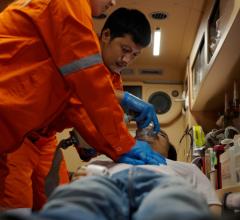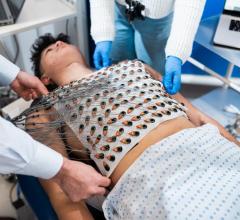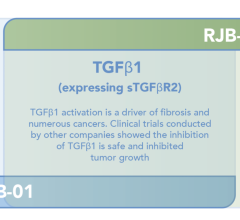
Getty Images
July 21, 2022 — The global automated external defibrillators market size was valued at USD 717 million in 2021. It is estimated to reach $1,621 million by 2030, growing at a CAGR of 9.49% during the forecast period (2022–2030). North America acquires the largest position in the market and is expected to grow at a CAGR of 9.32% by 2030.
Automated external defibrillators are life-saving gadgets used to regulate the heartbeat. AEDs are portable medical devices designed to treat sudden cardiac arrest, a condition in which the heart stops beating unexpectedly. Cardiopulmonary resuscitation and early defibrillation effectively save lives when administered within the first few minutes following cardiac arrest. Typically, this happens when severance is caused by the heart's electrical activity, which results in a dangerously fast or irregular heartbeat. Either of these irregular heart rhythms inhibits the heart's ability to effectively pump blood and can result in cardiac arrest.
Batteries and electrode pads are necessary for the AED to detect and interpret an electrocardiogram and administer an electrical shock. The prime contributors to the growth of the automated electronic defibrillator market are the increasing prevalence of cardiac diseases, the rising geriatric population, technological advancements in the field, and the rising investment by market participants. In addition, the prevalence of sedentary lifestyles and the increase in the global geriatric population contribute to the rise in the incidence of cardiovascular diseases.
According to the Journal of Cardiovascular Development and Disease article titled 'Cardiovascular Risks Associated with Gender and Aging,' risk factors closely associated with advanced age, such as frailty, obesity, and diabetes, exacerbate the risk of cardiovascular disease. According to these studies, the risk of cardiovascular diseases increases with age. Consequently, AED usage will increase in the near future.
Growing Prevalence of Cardiac Diseases and Technological Advancements in the Field of Defibrillators Drives the Market
During the forecast period, the market for automated external defibrillators is expected to be bolstered by the rising incidence of cardiac diseases across all age groups, traumatic work conditions, a sedentary lifestyle, and the incrementing intake of tobacco, alcohol, and illicit drugs. According to an article published in the International Journal of Stroke in January 2020 titled "Global epidemiology of atrial fibrillation: An escalating epidemic and public health challenge," the incidence of atrial fibrillation worldwide is 37,574 million cases (0.51 %) and has increased by 33% over the past two decades.
In addition, according to future projections, the total burden of atrial fibrillation may increase by over 60% by 2050. This escalating prevalence of arrhythmia generates demand for automated external defibrillators, propelling the growth of the analyzed market over the forecast period. In addition, the rising incidence of cardiovascular disease-related deaths contributes to the expansion of the market. Further, the incidence of cardiovascular diseases among adults older than 80 years was noted as 89.3 % in the male population and 91.8 % in the female population. Due to the high prevalence of cardiac disease in the elderly, the market is growing. Consequently, it is anticipated that the market will expand during the forecast period.
The sophisticated healthcare infrastructure, favorable government initiatives regarding product development, and relatively high healthcare expenditures pave the way for advancing technology in healthcare, thereby boosting the scope of the automated external defibrillator market. In addition, market participants are collaborating on developing a comprehensive end-to-end method that integrates innovative hardware and advanced software to expand the pre-hospital scope of care for first responders. Thereby accelerating market growth.
For more information: https://straitsresearch.com/


 January 30, 2024
January 30, 2024 








